Abstract
Although an intensified interest in mosquito cytogenetics in the past decade has produced a number of contributions to knowledge on this subject, the available information is still superficial and limited to a few mosquito species only. The author of this review summarizes the research done in this field between 1953 and 1962.
The following are some of the achievements and some of the gaps that remain to be filled. Karyotypes of several species of Anopheles, Aedes and Culex conform to the general pattern 2n=6, with heterosomes distinguishable only in Anopheles. At least three different karyotypes are present in Anopheles. Salivary gland chromosome maps are now available for several anopheline species, but are still lacking for Culex and Aedes. No precise correlation may yet be made between the frequency of chromosomal aberrations and the degree of insecticide-resistance. Sexual differences in the salivary X-chromosomes have been reported for several species of Anopheles. Chromosomal polymorphism is common in some anophelines, but rare in others. Chromosomal mutation has been induced by means of X-rays.
In his conclusions, the author stresses that prospects are especially good for evolutionary and genetic studies involving chromosomal polymorphism.
Full text
PDF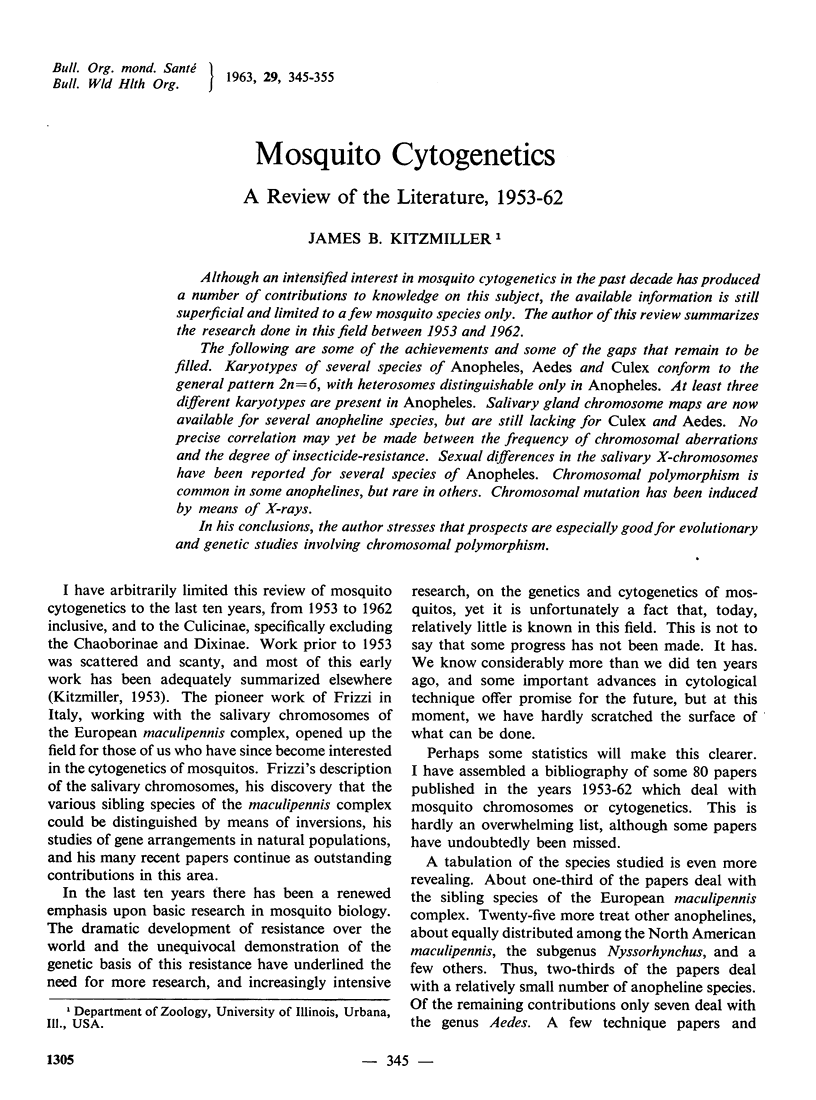
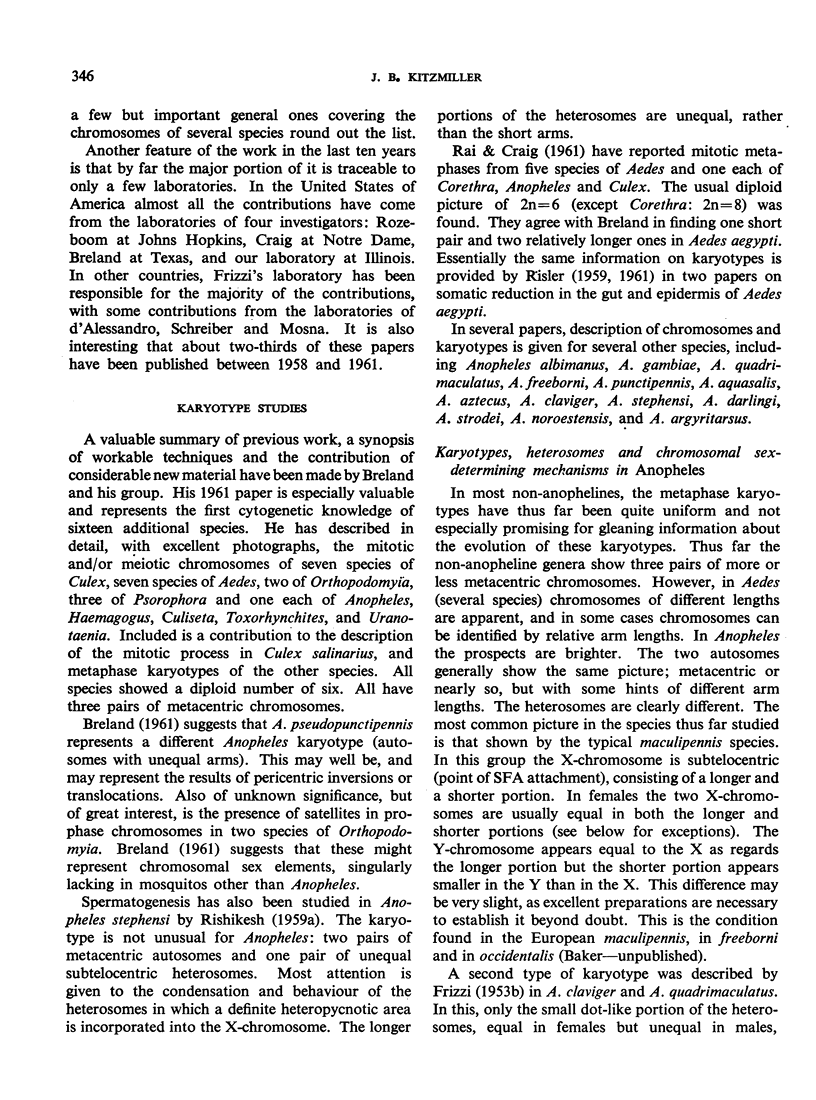
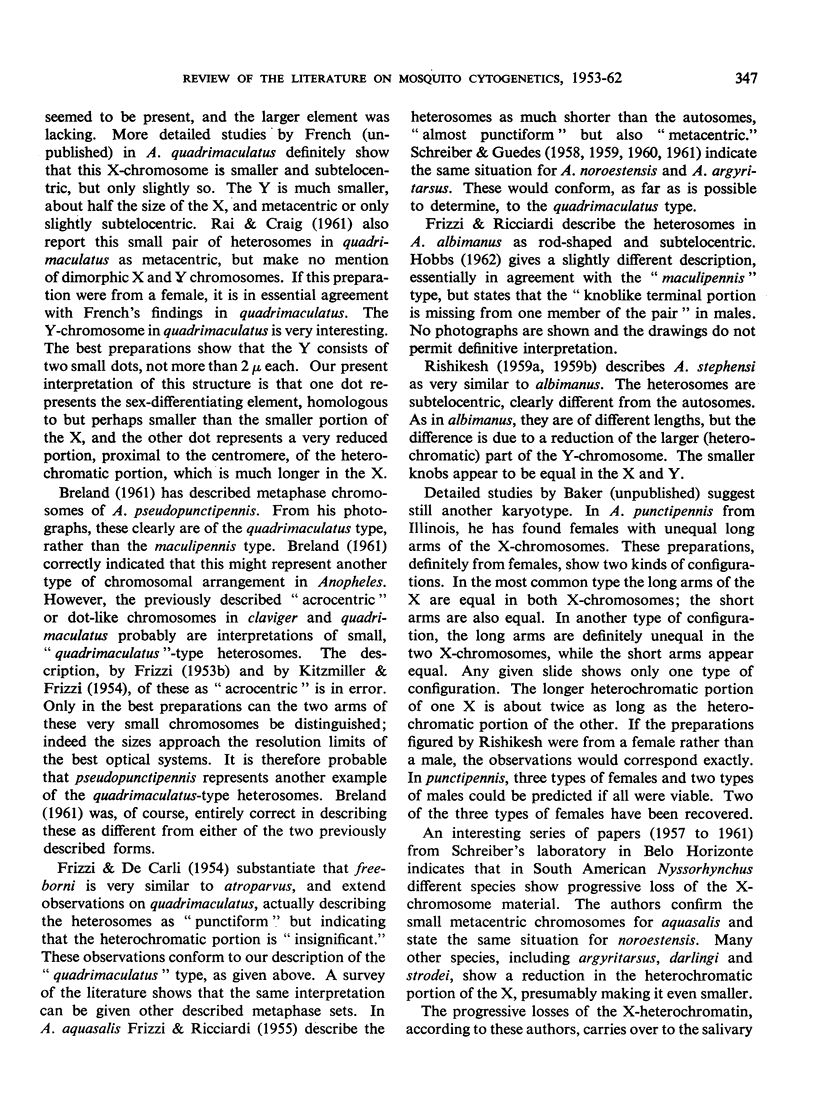
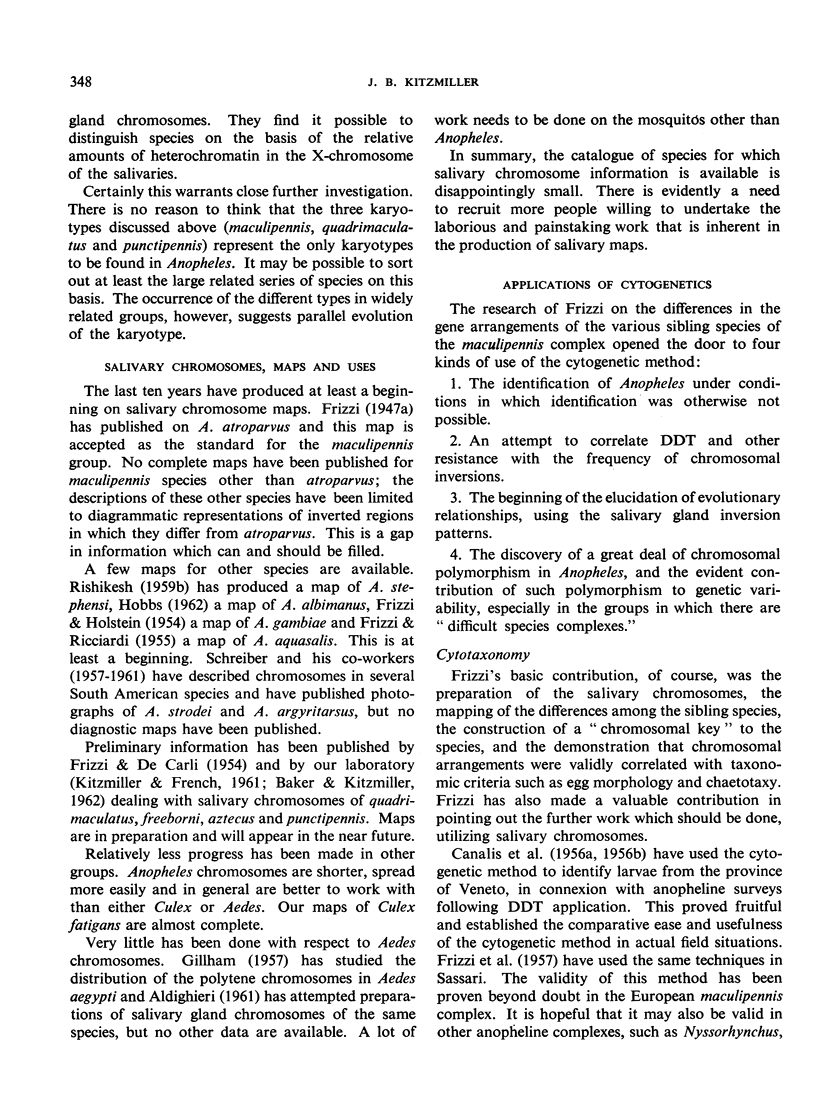
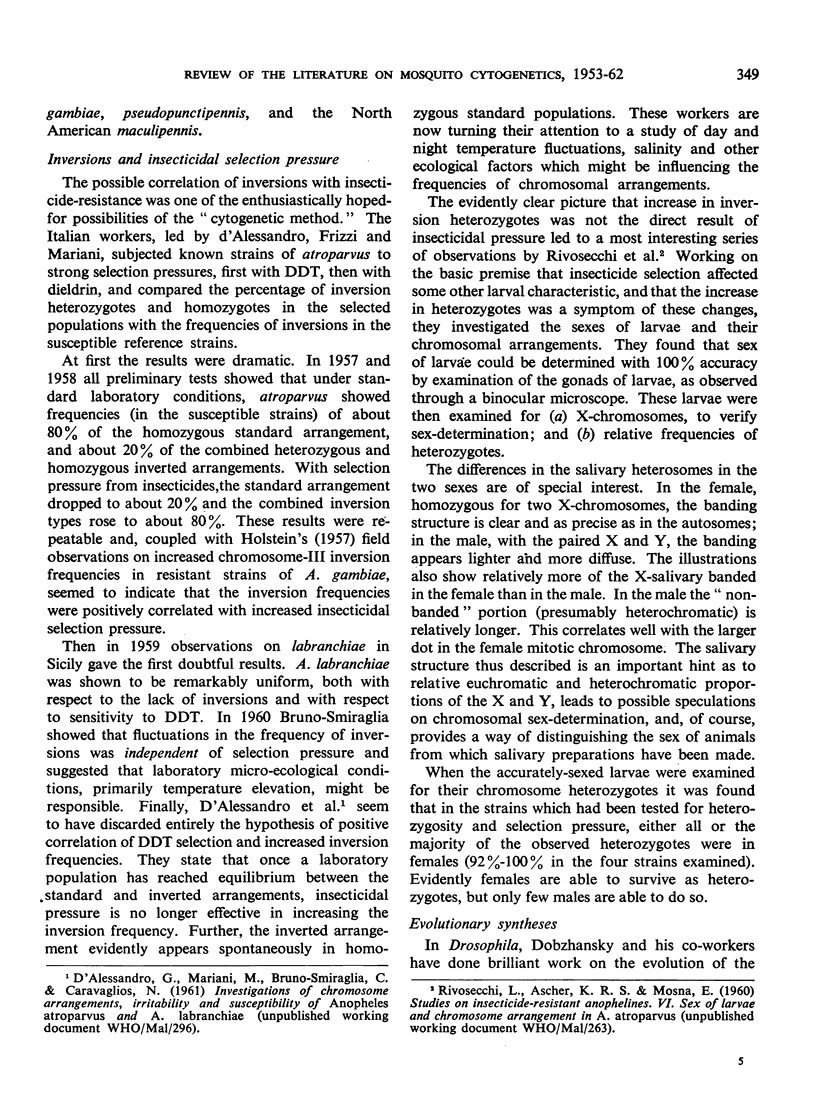
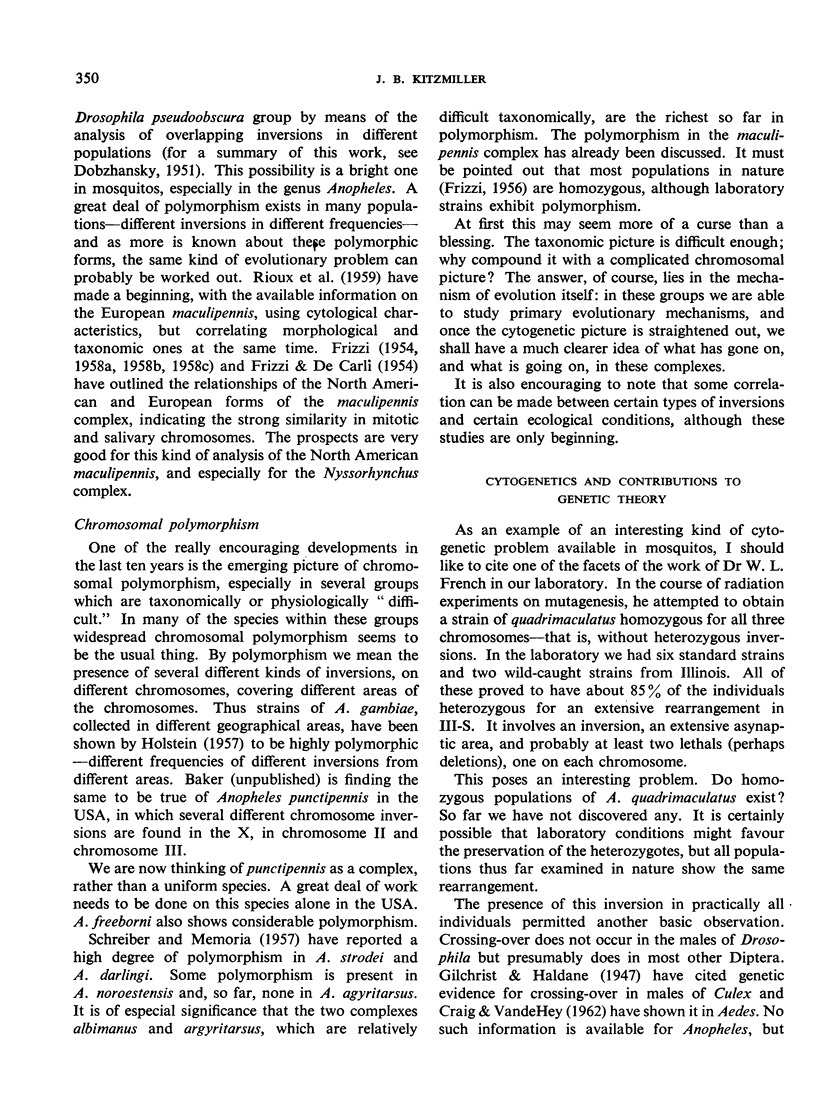
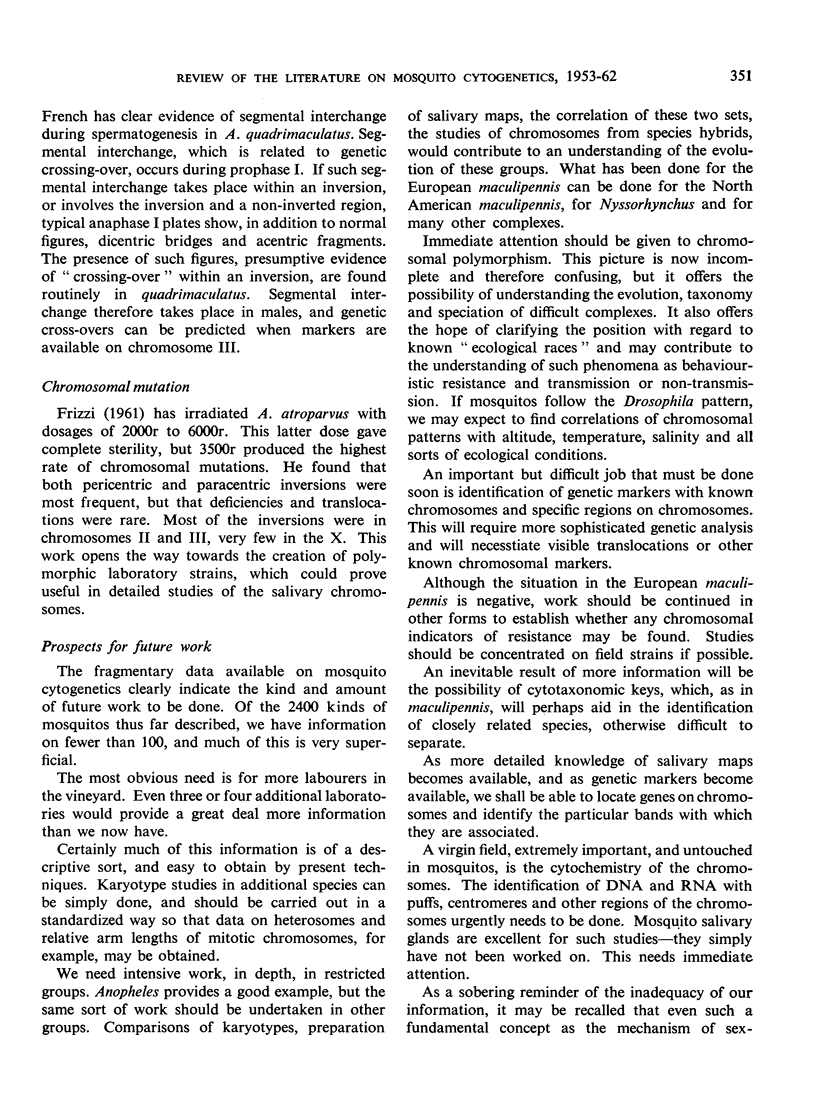
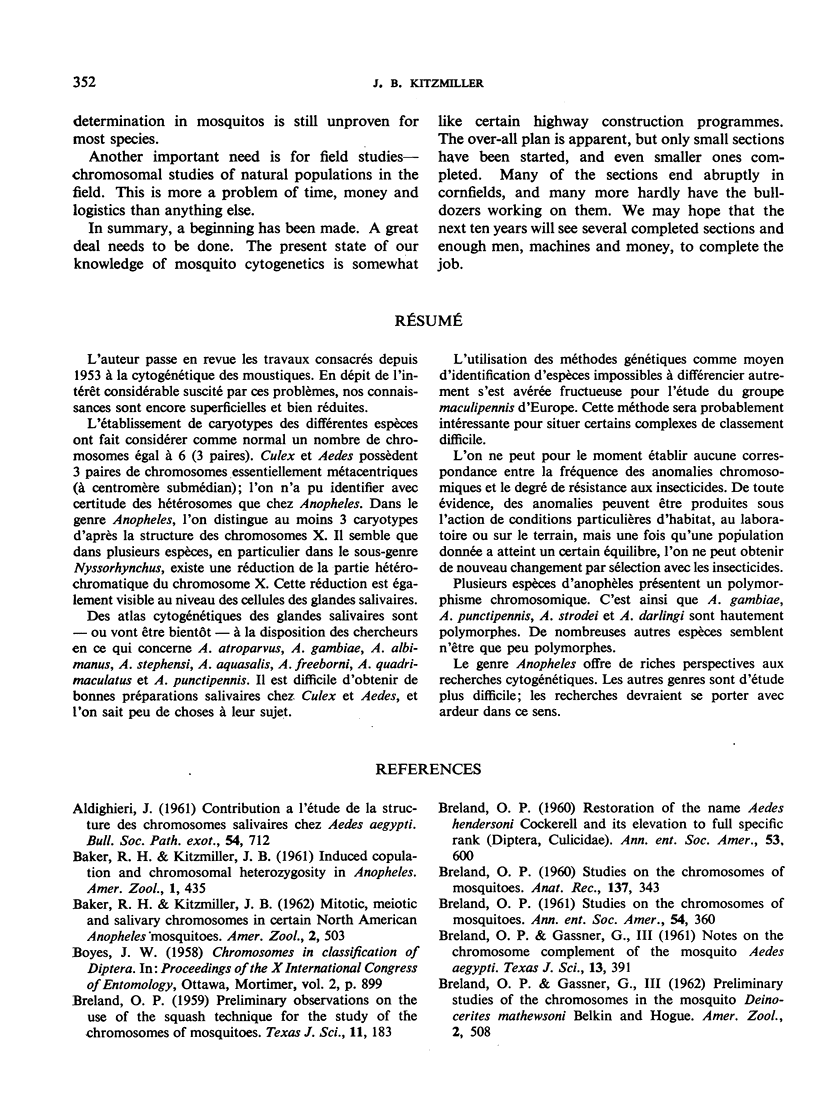
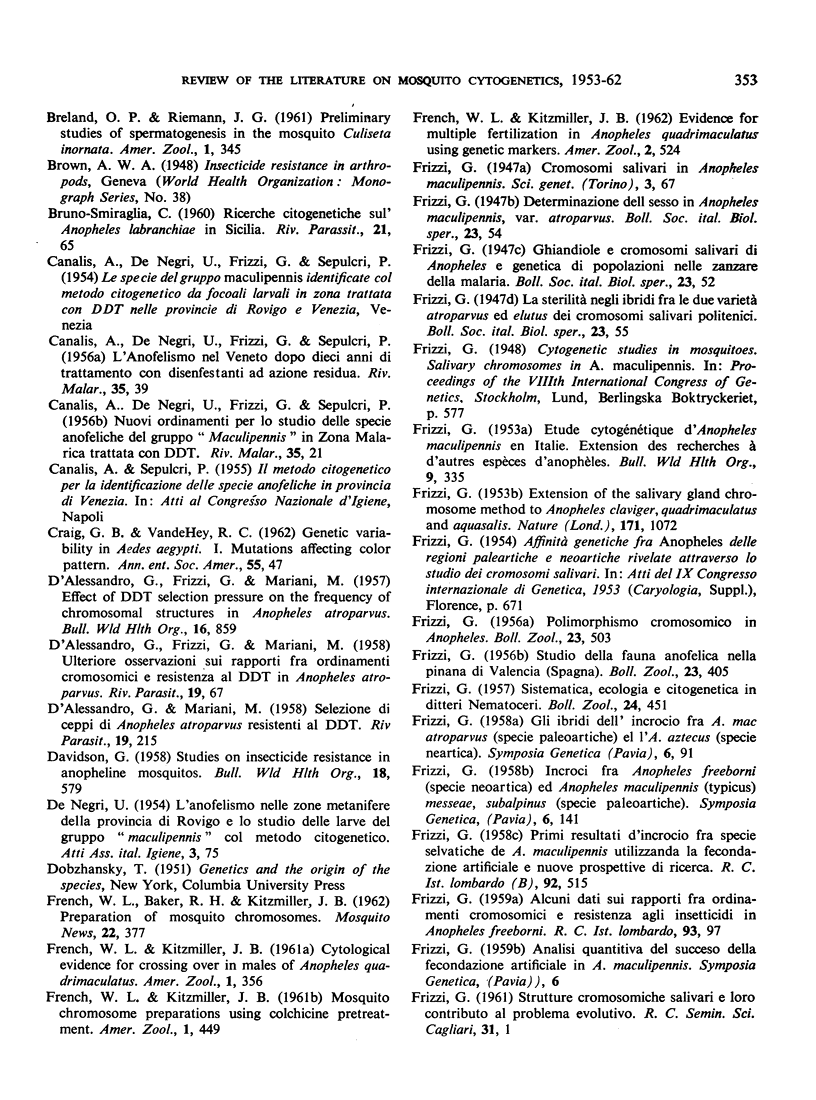
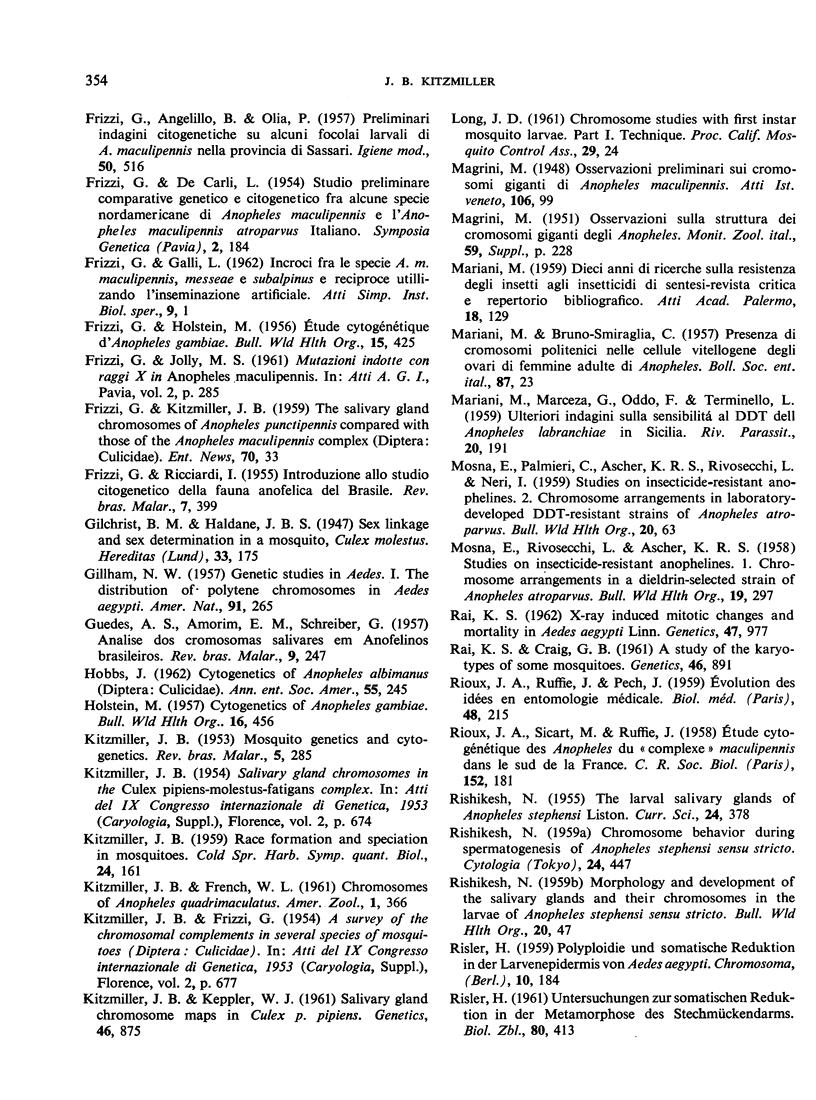
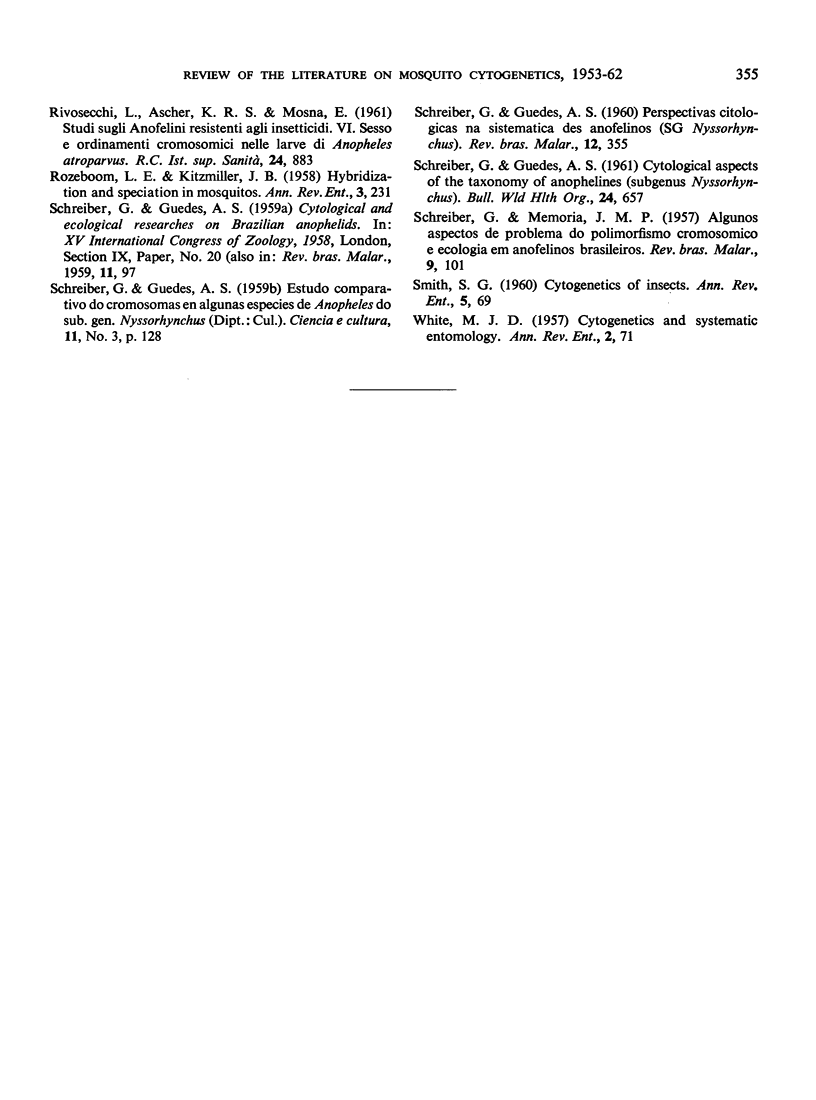
Selected References
These references are in PubMed. This may not be the complete list of references from this article.
- D'ALESSANDRO G., LAZZARO G. F., MARIANI M. Effect of DDT selection pressure on the frequency of chromosomal structures in Anopheles atroparvus. Bull World Health Organ. 1957;16(4):859–864. [PMC free article] [PubMed] [Google Scholar]
- DAVIDSON G. Studies on insecticide resistance in anopheline mosquitos. Bull World Health Organ. 1958;18(4):579–621. [PMC free article] [PubMed] [Google Scholar]
- FRIZZI G. Etude cytogénétique d'Anopheles maculipennis en Italie; extension des recherches à d'autres espèces d'anophèles. Bull World Health Organ. 1953;9(3):335–344. [PMC free article] [PubMed] [Google Scholar]
- FRIZZI G. Extension of the salivary chromosome method to Anopheles claviger, quadrimaculatus and aquasalis. Nature. 1953 Jun 13;171(4363):1072–1072. doi: 10.1038/1711072a0. [DOI] [PubMed] [Google Scholar]
- FRIZZI G., HOLSTEIN M. Etude cytogénétique d'Anopheles gambiae. Bull World Health Organ. 1956;15(3-5):425–435. [PMC free article] [PubMed] [Google Scholar]
- FRIZZI G., RICCIARDI I. Introduzione allo studio citogenetico della fauna anofelica del Brasile. Rev Bras Malariol Doencas Trop. 1955 Oct;7(4):399–407. [PubMed] [Google Scholar]
- HOLSTEIN M. Cytogenetics of Anopheles gambiae. Bull World Health Organ. 1957;16(2):456–458. [PMC free article] [PubMed] [Google Scholar]
- KITZMILLER J. B. Mosquito genetics and cytogenetics. Rev Bras Malariol Doencas Trop. 1953 Oct;5(4):285–359. [PubMed] [Google Scholar]
- KITZMILLER J. B. Race formation and speciation in mosquitoes. Cold Spring Harb Symp Quant Biol. 1959;24:161–165. doi: 10.1101/sqb.1959.024.01.016. [DOI] [PubMed] [Google Scholar]
- MOSNA E., RIVOSECCHI L., ASCHER K. R. Studies on insecticide-resistant anophelines. I. Chromosome arrangements in a dieldrin-selected strain of Anopheles atroparvus. Bull World Health Organ. 1958;19(2):297–301. [PMC free article] [PubMed] [Google Scholar]
- RIOUX J. A., RUFFIE J., PECH J. Evolution des idées en entomologie médicale; le problème du complexe maculipennis. Biol Med (Paris) 1959 May-Jun;48(3):215–237. [PubMed] [Google Scholar]
- RIOUX J. A., SICART M., RUFFIE Etude cytogénétique des Anophèles du complexe maculipennis dans le sud de la France. C R Seances Soc Biol Fil. 1958;152(1):181–182. [PubMed] [Google Scholar]
- RISLER H. Polyploidie und somatische Reduktion in der Larvenepidermis von Aedes aegypti L. (Culicidae). Chromosoma. 1959;10(2):184–209. doi: 10.1007/BF00396571. [DOI] [PubMed] [Google Scholar]
- SCHREIBER G., GUEDES A. S. Cytological aspects of the taxonomy of anophelines (subgenus Nyssorhynchus). Bull World Health Organ. 1961;24:657–658. [PMC free article] [PubMed] [Google Scholar]


